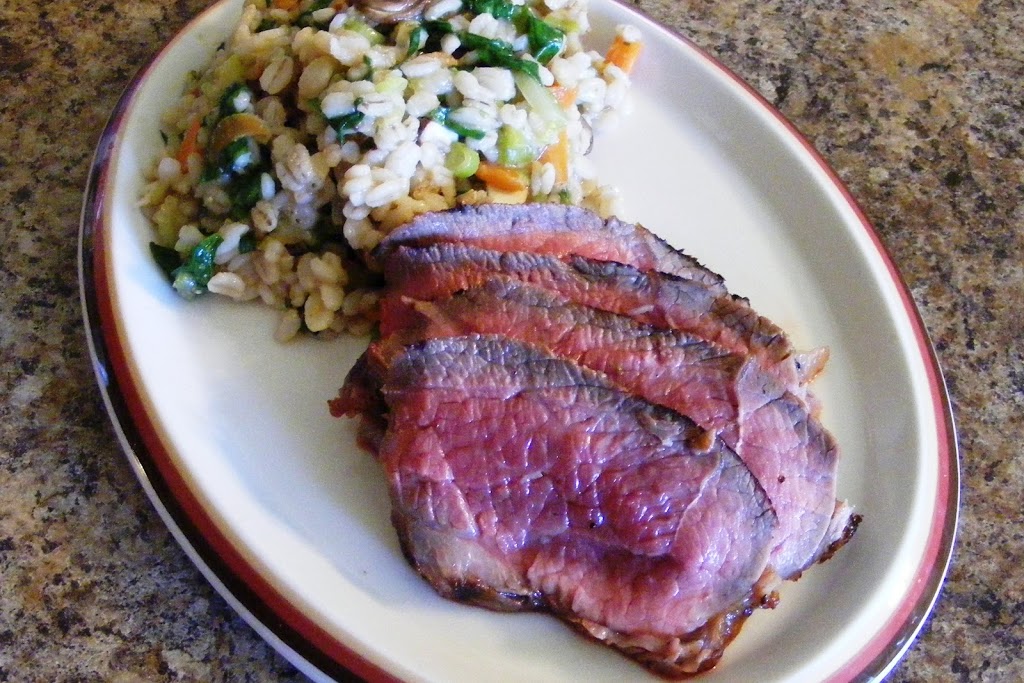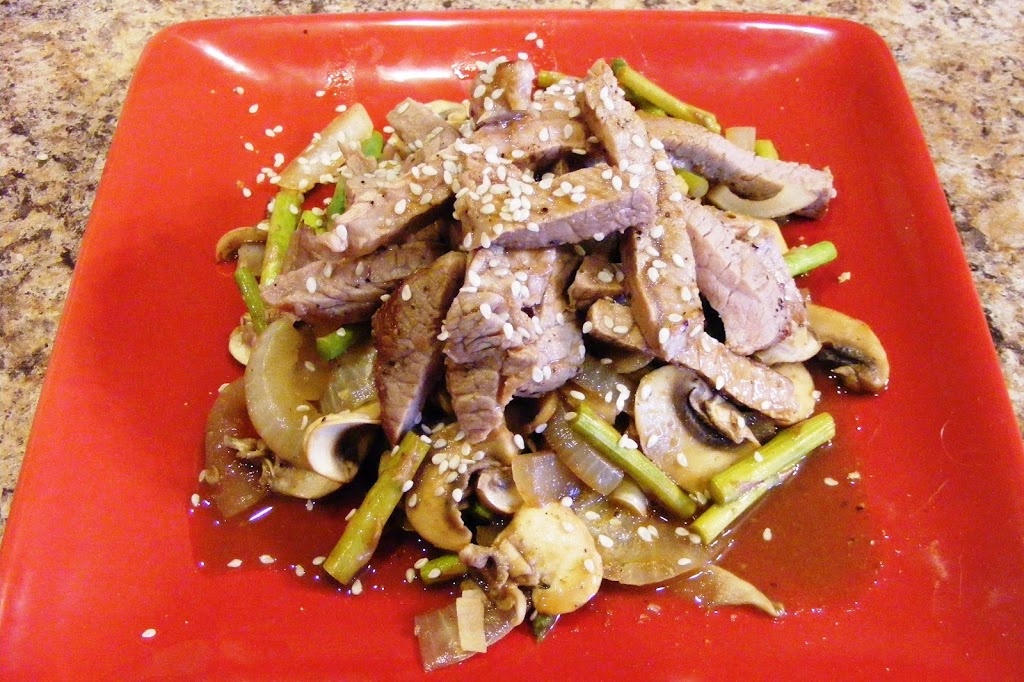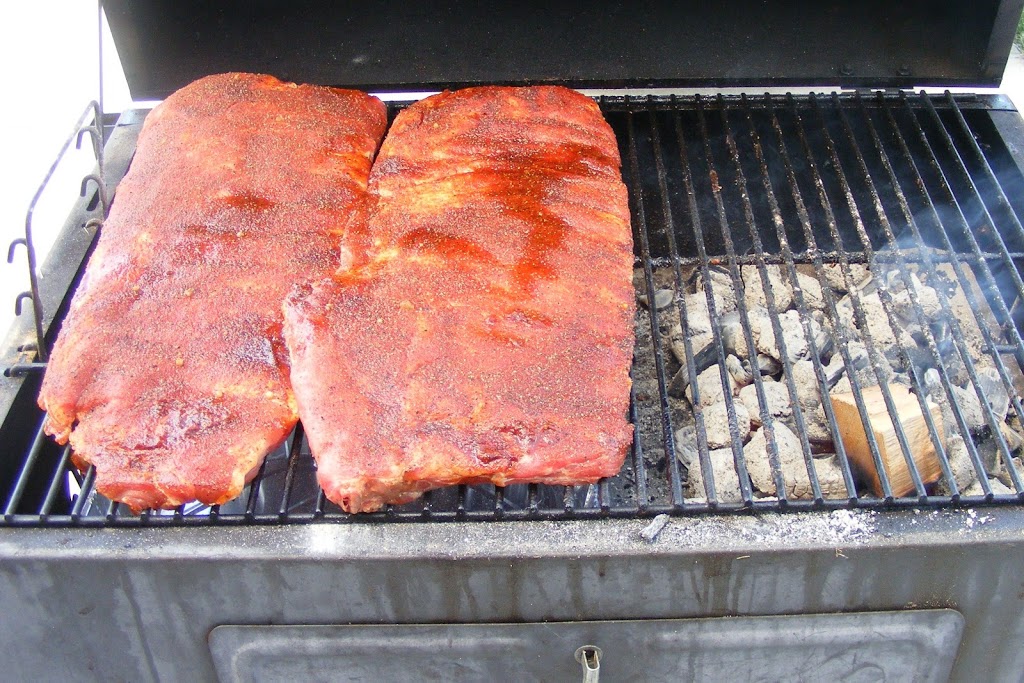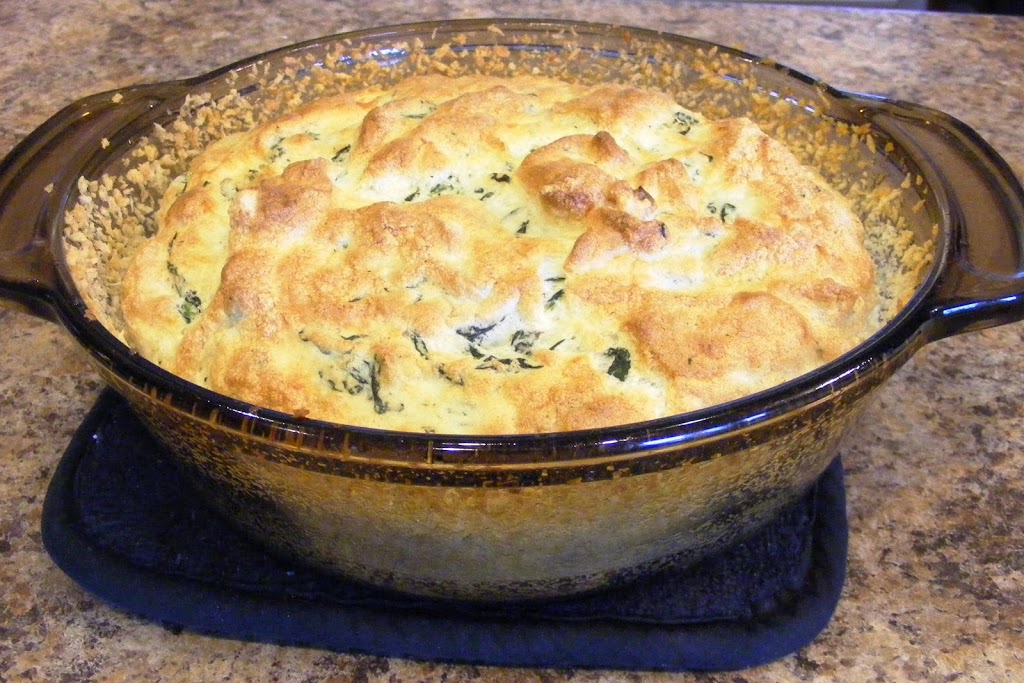We enjoyed a fantastic evening yesterday with several friends. Tammy and I decided to throw a “wine and dine party”, with four courses and a different wine paired with each, hopefully paired to enhance the flavors of both the food and wine. (I say hopefully, because I will admit to only amateur-status with food-wine pairings.)
The first course was a modification of an appetizer that we first tasted while on the Bites of Boston Food Tours. At Orinoco, we were served an almond-stuffed, bacon-wrapped date. It was delicious and when we came home, I attempted to copy–and then modify–the recipe.
Stuffed and Wrapped Fruits
The bottom bite is the same recipe as we ate in Boston, but the top is the same creation but using a prune instead of a date. Both were good, and are served here on a small wedge (0.5 ounce each) of creamy and mild Gouda cheese. We decided to pair this sweet and savory bite with a sweet, almond-flavored sparkling wine. The wine helped bring out the almond from the bite and the bubbles help mellow the sweetness. The idea to serve the bites on cheese came to me while on the Bites of Boston Tour, when Alyssa took us to a cheese shop a few stops after Orinoco.
The second course was the salad course and I made a variation of the salad pictured below (I omitted the olives.) This salad is simple to make. I just layer thin slices (less than 1/4 inch thick) of tomato, top with 1 tablespoon (1/2 ounce) crumbled feta cheese, and a chiffonade of fresh basil. For dressing I use nothing more than a touch of fresh cracked pepper, some kosher salt, and a teaspoon extra virgin olive oil.
Because the tomatoes were fresh, sweet and aromatic, the cheese a touch salty, and the basil brightly flavored, I wanted a semi-sweet fruity white wine. When we were on vacation, we stayed at Buccia Vineyard B&B, and spent an evening learning about the wines from owner Fred Bucci. We fell in love with his Agawam white table wine. It is light and fruity with a sweetness to offset the acid in the tomatoes.
The main course is something that I first ate when Tammy surprised me with reservations for the chef’s table at Chives, in Suamico, Wisconsin. It was duck confit with hen-of-the-woods mushrooms and potato gnocchi. I attempted to replicate it for this dinner, subbing oyster mushrooms for the hen-of-the-woods (just because of personal preference.) This turned out really nice, and Tammy told me that it tasted like what she tasted at Chives. (I am not trying to compare my skills to chef/owner JR Schoenfeld–that guy is awesome!)
Duck confit, with oyster and crimini mushrooms on potato gnocchi
If you have never eaten duck, it has a taste similar to turkey dark meat, but meatier and richer. It is also much fattier. That makes the food taste incredible but not something that I could eat every day. I served this with another Buccia offering, their Cabernet Franc. This grape is usually blended with other varieties, but Buccia makes this wine with just this one grape. It is lighter than a Cabernet Sauvignon, and a hint sweeter. Tammy generally does not like dry wines, but she liked how the dryness of the wine help attenuate the fattiness of the dish. Also, the wine had spicy (black pepper) characteristics that just fit perfect. (We are going to need to drive back to Ohio and go to Buccia again. I wish they could ship out of state, but they are forbidden by law.)
Of course, no meal is complete without a dessert. Tammy and I had an idea (I’ll be honest, we stole the idea when we learned of it at a wine-and-food class at Peller Estates, Niagara-on-the-Lake, Ontario. Another place that cannot ship to us, which means another trip to Canada!) At the class we sampled a delicious eiswine, and the facilitator of the class told us that a nice dessert can be made by freezing a scoop of ice cream and making a hole (a well) in the middle and then filling the well with eiswein.
Simplicity itself! Except it isn’t. If you don’t get the ice cream frozen enough it slides all over. Then making the well is not as easy as it sounds. Eventually, we just decided that we were not going to serve that for dessert. So, the night before the meal, we started digging through cookbooks. In Rocco DiSpirito’s Now Eat This! we found this homemade mocha mousse.
Yeah. A REAL mocha mousse.
This isn’t pudding with whipped cream blended in!
The dessert was almost ridiculously easy to make and impressive as heck to serve. We paired that with a locally-produce sweet dessert wine,
Parallel 44’s Frost Bite. While not truly an eiswein, it has many of the characteristics of one. The rich sweetness is balanced by a nice acidity, which helped bring out the chocolate and espresso flavors of the mousse. The mousse itself was not very sweet which resulted in a nice pairing.
Okay. Here are the recipes.
Date/Prune Bites:
Serves as many as you make.
Using pitted fruits, stuff a roasted almond inside. Pan-fry a strip of bacon, just a little to partially cook it. You don’t want it to get brown. Wrap the fruit in the bacon and secure with a toothpick. One strip of bacon will wrap three fruits.
With the rack NOT on the top setting, preheat your oven’s broiler to high. (If you put the rack as high as it will go, the bites will quickly burn. I set my rack one level lower.) Two minutes under the broiler and they will be done.
I used low sodium bacon.
Nutritional data for 1 bite (excluding the cheese):
Calories: 44
Fat: 2.1g
Sat fat: 0.6g
Chol: 3.3mg
Sodium: 73.3mg
Carbs: 5.4g
Fiber: 0.6g
Protein: 1.4g
Tomato Salad
Serves 2
2 tomatoes, ideally one yellow, one red
Crumbled feta cheese
Salt, Pepper
Olive oil
Slice tomatoes. Layer them on your plate as you prefer. Top with cheese and drizzle 1 teaspoon olive oil. Sprinkle pepper and salt.
Nutritional data:
Calories: 86
Fat: 6.9g
Sat fat: 2.1g
Chol: 8.3mg
Sodium: 110.4mg
Carbs: 4.9g
Fiber: 1.4g
Protein: 2.4g
Duck Confit, with Oyster and Crimini Mushrooms, on Potato Gnocchi
Serves 6
(I used store-bought gnocchi, since I had never made the recipe before. I wanted to control for variables and concentrate on the duck. Next time, I will make the gnocchi from scratch.)
1 ounce dried oyster (or other) mushroom
8 ounces fresh crimini mushrooms
1 tablespoon olive oil
1 duck, approximately 5 pounds, whole or in pieces
1 bottle dry wine, a blush or a white
1 pound gnocchi (approximately 60)
1 cup flour
1. Bring 1.5 cups water to a boil. Remove from heat. Place dried mushrooms in water and allow to rehydrate. This will take 10-15 minutes. when rehydrated, strain mushrooms, and set aside. RESERVE the mushroom water.
2. Place flour in a Ziploc bag. Add your preferred seasoning.
3. Cut duck into pieces, leaving skin on.
4. One piece at a time, place duck in Ziploc, and shake to coat. Remove duck and set aside.
5. Heat a non-stick skillet (or your pressure cooker). Add 1/2 tablespoon olive oil. Working in batches, brown the duck on all side.
6. If you have one, prepare your pressure cooker. Add 1 cup mushroom water and 1 cup wine to cooker. Place all duck pieces in. Seal according to your unit’s directions. Cook on high pressure for 12 minutes. Allow pressure to drop naturally.
7. Remove duck, let cool a little and then shred. Return the shredded duck to the broth and keep warm.
8. Prepare the gnocchi as per instructions. I dropped my into boiling water/wine (2 cups each) and let them cook until they floated.
9. While the gnocchi is cooking, preheat skillet with 1/2 tablespoon oil. Saute crimini mushrooms over med-high heat for 1-2 minutes. Add rehydrated mushroom.
10. Drain gnocchi and add to mushrooms. Saute until they are beginning to brown (3-4 minutes)
11. When every hot and cooked, add the duck to the mushrooms. I kept the broth in a separate saucepan to keep it warm and to help me portion more accurately.
12. Divide into 6 portions. Top with 2-3 ounces broth.
Nutritional data:
Calories: 371
Fat: 8.7g
Sat fat: 3.0g
Chol: 67.3mg
Sodium: 469mg (Almost entirely from gnocchi)
Carbs: 45.9g
Fiber: 2.2g
Protein: 22.8g
If you do not have a pressure cooker, use a large kettle and bring mushroom-wine to a boil. Add duck and cook until finished. (I’m not sure how long that will take. You will need to test from time to time. My guess will be 30-45 minutes.)
Mocha Mousse
Serve 8
1 teaspoon vanilla
2 teaspoon water
2 teaspoon gelatin (one packet is a little more than that amount)
3 whole eggs egg yolk (or 2/3 cup egg substitute–I used real eggs.)
2 tablespoons honey
1/4 teaspoon salt
3 ounce unsweetened baking chocolate, chopped fine
2 tablespoons instant espresso powder (if you can’t find that, use 3 tablespoons instant coffee)
8 egg white, at room temperature
1 teaspoon cream of tartar
1/2 cup Splenda
1. Place a perfectly clean large glass or metal bowl in freeze 2-3 hours before you plan to make the mousse.
2. Combine water (room temperature), vanilla and gelatin in a large bowl. Set aside to allow the gelatin to “bloom”. (2-3 minutes) It will look like solid Jello when ready. That is okay.
3. Set a 2/3 full saucepan on stove and bring to a boil. Set a small metal pan on it (or use a double boiler.)Add whole eggs, honey, salt and whisk together.
4. Add espresso powder and chocolate. Whisk until the chocolate melts. This will take about 1-2 minutes. Remove from heat and pour over gelatin, whisking together until the gelatin is melted into the chocolate-espresso mixture.
5. Remove bowl from freezer. Place egg whites in and begin beating with an electric beater.
6. When the whites begin to froth, add cream of tartar and continue beating.
7. When the whites are getting thicker, but still soft, add Splenda while continuing to beat the egg whites.
8. When the egg whites form soft-medium peaks, fold 1/3 of the egg whites into the chocolate mix. FOLD CAREFULLY so the whites are able to retain the air.
9. Continue to add the whites in two more additions.
10. Carefully spoon into serving dishes and refrigerate for at least 1 hour, and up to 6 hours. Top with whipped cream and fruit or chocolate chips and another light dusting of espresso powder.
Nutritional data:
Calories: 135
Fat: 8.2g
Sat fat: 5 g
Chol: 79mg
Sodium: 81mg
Carbs: 11.6g
Fiber: 2g
Protein: 7 .6g
NOTE: This recipe uses raw eggs throughout. When using the double boiler, they are not held at a temperature high enough to pasteurize the eggs. The egg whites are never exposed to any heat. Raw eggs can cause illness, especially the elderly and those prone to infections. Make and eat this recipe at your own risk. (That being said, we all ate them, as did my children.)





























